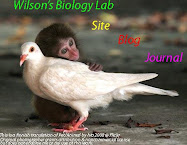The factors contributing to the cause of ADHD have not been fully established. A recent study from Korea suggests an interesting possibility relates to chemical exposure in children. The model suggests children ingest toxins while they play with their plastic toys. The toxins identified are called Phthalates (tha-ˌlāt). These are major chemicals used in manufacturing many plastics. These compounds are used in products ranging from toys, cleaning materials, plastics, personal care items, and other materials.
Recent studies suggest Phthalates are dangerous to children who have contact with the material. Some scientists are saying these chemicals can cause hormonal disruptions, birth defects, asthma, and reproductive problems in humans.
ADHD is not one specific psychiatric or neurological disorder. The disease is represented a spectrum of disorders occurring during development and causing inattention and hyper activity. Hyperactivity is defined as squeamish, inability to follow rules, talks excessively, and has trouble being quiet. Inattention is characterized by making careless mistakes, difficulty sustaining attention, distracted by extraneous stimuli, often forgetful of daily activities.
The Prevalence of ADHD is estimated to be 3 to 7% in school age children.
Phthalates involved with plastic manufacturing have been recently linked to ADHD symptoms. These findings were published by Korean scientists alarming public health advocates phthalates. Their study measured urine phthalate concentrations along in children who were evaluated for symptoms of ADHD using teacher-reported instruments and computerized tests that measured attention and impulsive behavior and test scores. Sadly these tests are inconclusive to date. More research is needed to find results that can be replicated in other settings. This study is promising towards finding the cause and curing ADHD.
Many people are greatly alarmed by this finding and demand increased attention toward plastics in toy products. ADHD is complicated by the probable multi factorial causes. There are several competing theories about causes of ADHD supported by scientific studies including genetic, dietary, environmental and developmental issues. There is disagreement among people interested in this problem. There is no unanimous conclusion as to what causes ADHD but Phthalates offers a new and plausible model.
By Adam Hall and Lucas Millman
Causing Of AdhdView more presentations from Student Wilsonsbiologylab.







